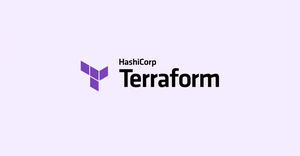Introduction
Understanding the nuances of URL structure is vital for creating seamless user experiences and optimizing for search engines. In the world of Apache web servers, .htaccess is a powerful directory-level configuration file that can manipulate URL behavior in many ways, including controlling whether URLs have a trailing slash.
This tutorial will cover how to add or remove trailing slashes from URLs using .htaccess, diving into the intricacies of mod_rewrite rules, conditions, and the significance of trailing slashes. Good .htaccess practices can improve site performance, prevent content duplication issues, and enhance SEO.
Basic Understanding of .htaccess
Before we manipulate trailing slashes, it’s essential to grasp the basics of .htaccess. The .htaccess file allows for decentralized management of web server configurations. Through directives, it can override global settings, enabling changes in behavior for specific directories.
Prerequisites
Ensure you have:
- Access to your server’s files, either via FTP or a file manager provided by your hosting service.
- Basic knowledge of regular expressions as they’re used in mod_rewrite rules.
- Enabled mod_rewrite module on your Apache server (usually enabled by default).
Adding a Trailing Slash
Enforcing a trailing slash can canonicalize URL structure which may benefit SEO. Here’s how to add it:
RewriteEngine On
RewriteCond %{REQUEST_FILENAME} !-f
RewriteCond %{REQUEST_URI} !(.+)/$
RewriteRule ^(.+)$ /$1/ [L,R=301]Explanation:
RewriteEngine On: Enables the rewrite engine.RewriteCond %{REQUEST_FILENAME} !-f: Only process the rule if the requested filename is not an existing file.RewriteCond %{REQUEST_URI} !(.+)/$: Applies the rule only if the URI doesn’t end with a trailing slash.RewriteRule ^(.+)$ /$1/ [L,R=301]: Adds a trailing slash and issues a 301 redirect to the slash-appended URL.
Removing a Trailing Slash
If you prefer URLs without trailing slashes (common for file-like URLs), you can strip them:
RewriteEngine On
RewriteCond %{REQUEST_FILENAME} !-d
RewriteCond %{REQUEST_URI} /(.+)/$
RewriteRule ^(.+)/$ /$1 [L,R=301]Explanation:
RewriteCond %{REQUEST_FILENAME} !-d: Ensures the rule is not applied to directories.- The remaining directives work similarly to the previous example, but in reverse.
Dealing with DirectorySlash
DirectorySlash is an Apache directive that automatically redirects directories without trailing slashes to their slashed counterparts. It may interfere with your rewrite rules:
DirectorySlash OffTurning off DirectorySlash can stop automatic redirection, giving control back to your rewrite rules. Be cautious as this may expose directory indexes if not handled correctly.
Advanced Scenarios
When dealing with complex applications, conditions and rules may need more granularity:
# Removing slash for certain file type
RewriteCond %{REQUEST_FILENAME} !-d
RewriteCond %{REQUEST_URI} ^(.+)/[a-zA-Z0-9_]+\.html/$
RewriteRule ^(.+)/$ /$1 [L,R=301]
# Adding slash based on specific directories
RewriteCond %{REQUEST_FILENAME} !-f
RewriteCond %{REQUEST_URI} !^/special-dir/(.+)/$
RewriteRule ^/special-dir/(.+)$ /special-dir/$1/ [L,R=301]These examples demonstrate how to tailor rules based on file types or directory paths, avoiding a blanket approach that may not fit all cases.
Testing Your .htaccess Rules
Changes to .htaccess can impact all traffic to your website. Before deploying:
- Always backup the current .htaccess file.
- Test in a staging or local environment.
- Use online tools to verify your HTAccess syntax.
Conclusion
In conclusion, the ability to manipulate trailing slashes in URLs using .htaccess is crucial for maintaining clean, canonical URLs that benefit both user navigation and SEO efforts. By following the examples provided, you can make precise adjustments catered to your website’s specific requirements.


